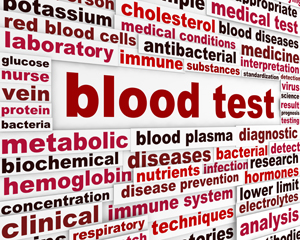Test Talk: Lactate
Collection requirements and diagnostic value
by Dennis Ernst • June 07, 2019

Lactate, also referred to as lactic acid, is produced by muscles, red blood cells, in the brain, and in other tissues when oxygen levels are insufficient. Lactate levels are ordered when physicians suspect their patient is not getting sufficient oxygen (hypoxia) or other conditions for which high lactate levels are symptoms. Such conditions include sepsis, congestive heart failure, shock, liver disease, chronic alcoholism, Reye's syndrome, uncontrolled diabetes, and kidney disease.
An elevated lactate level is not diagnostic by itself, but contributes to a diagnosis with other supportive indicators.
Lactates should be collected in heparin tubes (green stopper) and placed on ice immediately. If kept at room temperature, levels within the sample increase dramatically within minutes. Some studies limit room-temperature stability to two hours.
Significant confusion exists in regards to the effect of tourniquet constriction on lactate levels. A thorough review of the literature is inconclusive. No study shows lactates are affected when the tourniquet is applied and released within one minute, as required by industry standards, however, one study found lactate increases when the tourniquet is constricted for five minutes. The current CLSI venipuncture standard suggests lactate increases with venous stasis, but provides no reference. Follow facility policy.
Bibliography
- LabTestsOnline. American Association for Clinical Chemistry. AACC.
- CLSI. Collection of Diagnostic Venous Blood Specimens; Approved Standard—Seventh Edition. Clinical and Laboratory Standards Institute. Document GP41-A7 Wayne, Pennsylvania 2017.
- CLSI. Procedures for the Handling and Processing of Blood Specimens for Common Laboratory Tests; Approved Guideline—Fourth Edition. GP44-A4. Clinical and Laboratory Standards Institute. Document H18-A4 Wayne, Pennsylvania 2010.
- Wu A. Tietz Clinical Guide to Laboratory Tests---Fourth Edition. Elsevier. St. Louis, Missouri. 2006.
- World Health Organization. Use of Anticoagulants in Diagnostic Laboratory Investigations. WHO. Geneva, Switzerland. 2002.
Related Posts and Information
overall rating: my rating: log in to rate
blood draw YouTube preanalytical requirements tube
3 Comments
Heparin versus sodium fluoride
Dennis, I was surprised here when you said to collect lactic acid in a green top. Every lab manual I've seen, and every phlebotomy textbook, states a grey top (sodium fluoride). Perhaps it is time difference (green for stat, grey for routine)? What say you?
Thanks. Jeff
Jeff lavender, 09/20/2021 15:40:38
Heparin versus sodium fluoride
Nice to hear from you, Jeff. My sources that recommend heparin include Tietz Clinical Guide to Laboratory Tests and the WHO's USE OF ANTICOAGULANTS IN DIAGNOSTIC
LABORATORY INVESTIGATIONS (https://apps.who.int/iris/bitstream/handle/10665/65957/WHO_DIL_LAB_99.1_REV.2.pdf?sequence=1&isAllowed=y). They recommend heparinized whole blood. Perhaps the manuals you're seeing use plasma? Even so, neither of my documents recommend sodium fluoride. However, you and I both know the lab must use what the methodology requires.
Dennis Ernst, 09/21/2021 09:40:06
